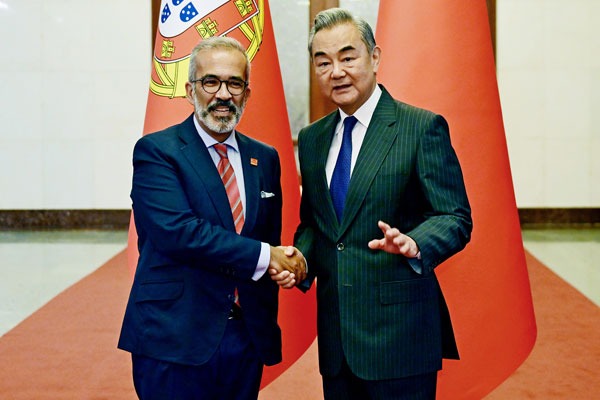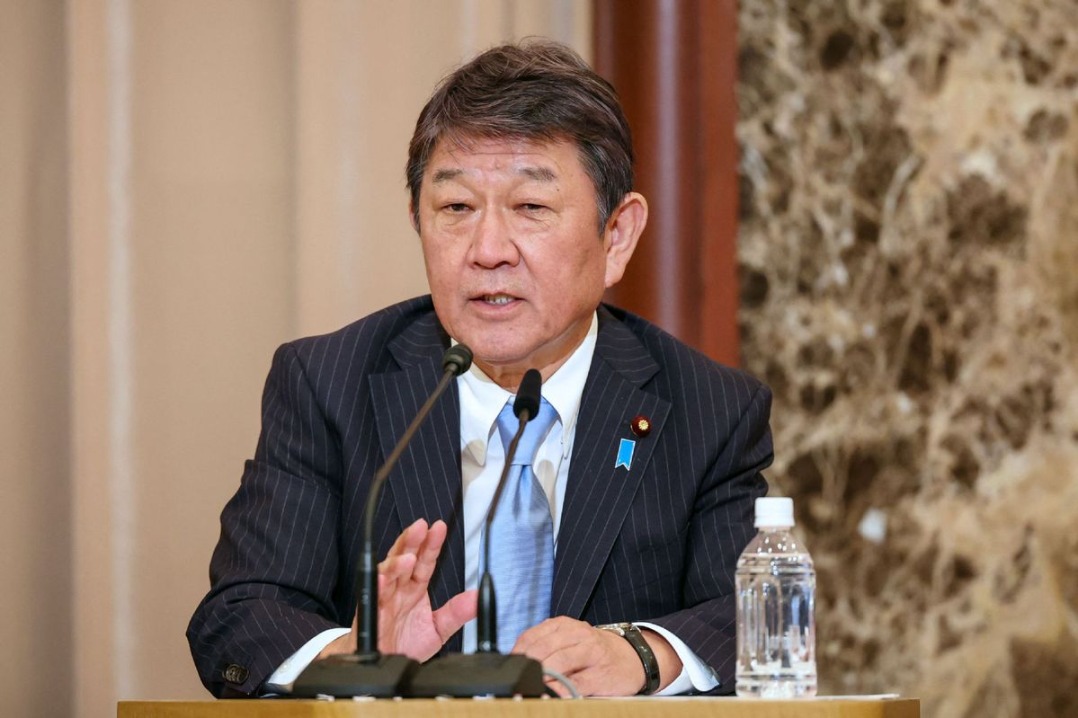US visa fee hike could send talent elsewhere

As the United States raises visa fee for foreign students, Beijing's C9 League — nine prestigious universities on the Chinese mainland — and growing scholarship programs are poised to capture a larger share of the world's brightest minds.
Around the world, competition for the brightest young minds has never been fiercer. Governments are offering scholarships, upgrading universities and streamlining visa processes to attract the next generation of innovators.
Against this backdrop, the US has chosen a different path — introducing new fees and hurdles for international students — in a move that could reshape the global flow of talent and shift academic power toward rising education hubs in Asia.
China, in particular, is stepping up its efforts to draw more students from abroad. It has expanded English-language degree programs, increased funding for scholarships and invested heavily in its elite C9 League universities, which are climbing in global rankings. These measures, coupled with lower tuition costs and a more predictable visa process, are positioning China as a compelling alternative for students who might once have looked first to the US.
Over the past two decades, the number of students studying outside their home country has surged from about 2.5 million in 2002 to nearly 6.9 million in 2022. The US has been the biggest beneficiary of this growth, attracting roughly one in six internationally mobile students and building an academic ecosystem that has long been the envy of the world. But that dominance is beginning to erode.
Countries such as Canada, Australia, the United Kingdom, China and South Korea are making significant gains through targeted scholarships, streamlined visas and aggressive recruitment campaigns, capturing an ever-larger share of a market once firmly in America's grasp.
Now, however, the US has introduced a new $250 "Visa Integrity Fee" for international visitors in a decision that is likely to ripple across the global higher education ecosystem and change long-standing student migration patterns.
As enacted in the One Big Beautiful Bill Act, US authorities will start collecting the new nonrefundable fee in October, on top of any other existing application and processing charges. For many families already stretched thin, the added cost — effectively doubling the B-1/B-2 visa fee in some instances — may be the last straw to drive them elsewhere.
By increasing the cost and complexity of studying in the US, the policy risks pushing talented students toward more affordable and welcoming destinations including China, South Korea and other Asian education hubs while eroding the US' long-held dominance in attracting the world's brightest minds.
The total cost of a US degree already ranks among the highest in the world. For students from countries such as China, India or Nigeria — all among the top five sources of international students in the US — tuition, housing and other living expenses can easily surpass $50,000 a year. Even before this latest fee, these costs were pushing some to consider alternatives in countries with lower tuition and more straightforward visa procedures.
The stakes are high. International students have long underpinned the financial health of US campuses and local economies. In 2023-24, a record 1,126,690 international students contributed $43.8 billion in tuition and living expenses and supported nearly 380,000 US jobs. These included 331,602 students from India, 277,398 from China, 35,589 from South Korea and 25,137 from Nigeria. Their spending also helped bolster the US trade surplus in services, which reached $278 billion in 2023, according to the US Commerce Department's Bureau of Economic Analysis.
Yet America is already losing ground. Chinese enrollment in US universities has dropped 25 percent since 2019. Indian numbers have grown but could plateau if costs continue to climb and visa procedures tighten. Visa scrutiny, pandemic-era restrictions and aggressive recruitment by Canada, Australia and the UK have already shifted student flows. Industry analysts warn that worsening diplomatic tensions could cost US universities more than $1 billion in lost tuition revenue by 2030.
As the US tightens access, China is seeing about 10 percent of its national research budget flowing into its elite C9 universities, which has pushed them up the global rankings, upgraded facilities, and offered talent-retention incentives. Formed in 2009, the C9 League comprises nine universities chosen for their academic excellence, research output and role in driving the country's innovation agenda.
In recent years, Chinese universities have expanded laboratory infrastructure, recruited world-class faculty from abroad, and increased the number of programs taught in English. This push is designed not only to keep more of China's brightest students at home, but also to attract international students who might once have automatically looked to the US or Europe.
South Korea, Singapore and other Asian nations are also positioning themselves as attractive study destinations through generous scholarships, English-language programs and streamlined visa processes. These trends give students compelling reasons to either remain in their home country or choose a non-US destination from the start.
Bruno Sergi is a professor of economics and political economy at the University of Messina (Unime) in Italy and Harvard Extension School, and chairperson of the Lab for Entrepreneurship and Development. Alfred Romann is managing director of Bahati, an editorial services agency in Hong Kong and Canada. The views do not necessarily reflect those of China Daily.

































